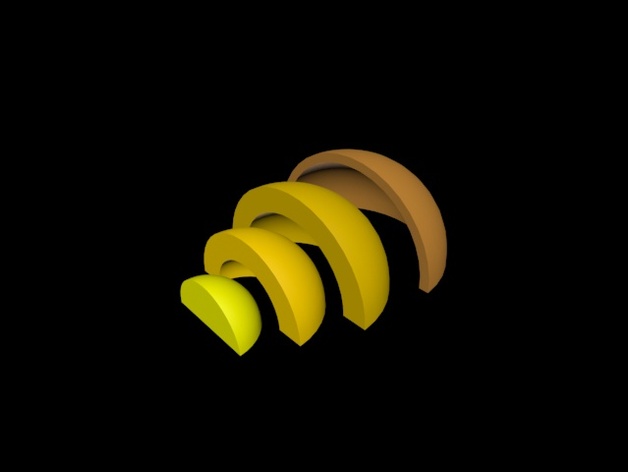
Earth Layers
thingiverse
The Earth's inner structure is divided into three distinct layers: the lithosphere, the asthenosphere, and the core. The lithosphere or land is the outermost solid layer surrounding the planet, comprising rocks and soil with varying levels of mineral content. It has a thickness of about 72 kilometers below continents, known as continental crust, and approximately 8 kilometers below oceans, referred to as oceanic crust. The rocks that make up the lithosphere can be categorized into three primary types: magmatic or igneous rocks, formed by solidified magma; sedimentary rocks, created through erosive action; and metamorphic rocks, which have undergone transformations from previous rock forms. Beneath the lithosphere lies the asthenosphere, a layer extending nearly halfway to Earth's center. This region is composed of various types of rocks that, due to extreme heat, exist in a semi-liquid state and are known as magma. At the innermost point of the planet is the core, accounting for approximately one-third of Earth's total mass. Characterized by extremely high temperatures, it is primarily composed of metals such as iron and nickel, along with other elements. The process of modeling these structures is straightforward. Imagine a ball and catch one-fourth of it; this can be achieved through intersection techniques. Duplicate the 1/4 ball and intersect smaller spheres to replicate the layers. Project: Earth Layers Objectives: * To assist students in understanding Earth's layered structure, with the core situated within the mantle and the crust atop the mantle. * Audiences: + High school students + Geography classes + Entrance exam preparation courses + Home-schooled students Preparation: Students should possess a basic understanding of geography and the Structure of the Earth. Step 1: Research Molecular Geometry Step 2: Create the Model The process of modeling these structures is straightforward. Imagine a ball and catch one-fourth of it; this can be achieved through intersection techniques. Duplicate the 1/4 ball and intersect smaller spheres to replicate the layers. Results: To assist students in understanding Earth's layered structure, with the core situated within the mantle and the crust atop the mantle.
With this file you will be able to print Earth Layers with your 3D printer. Click on the button and save the file on your computer to work, edit or customize your design. You can also find more 3D designs for printers on Earth Layers.
